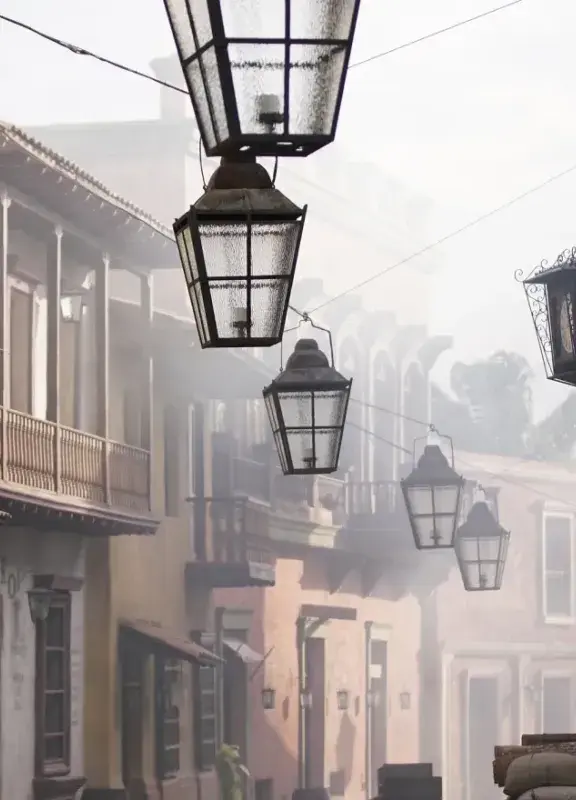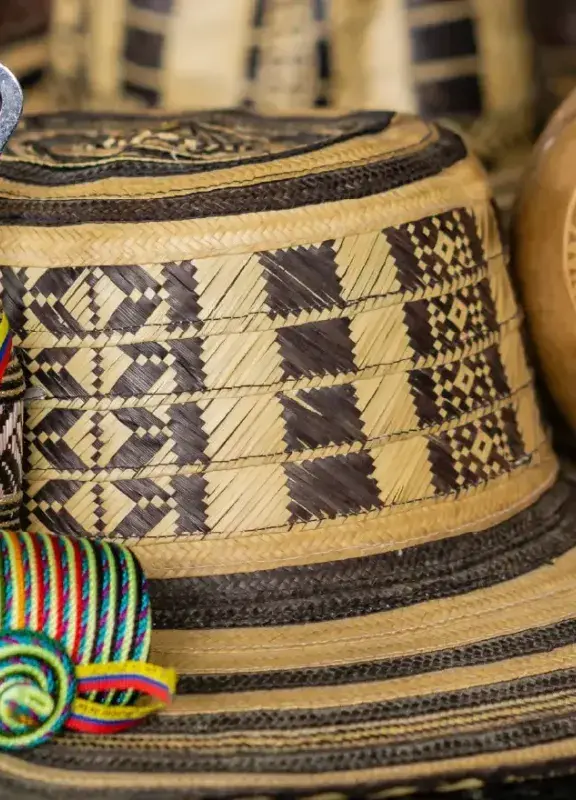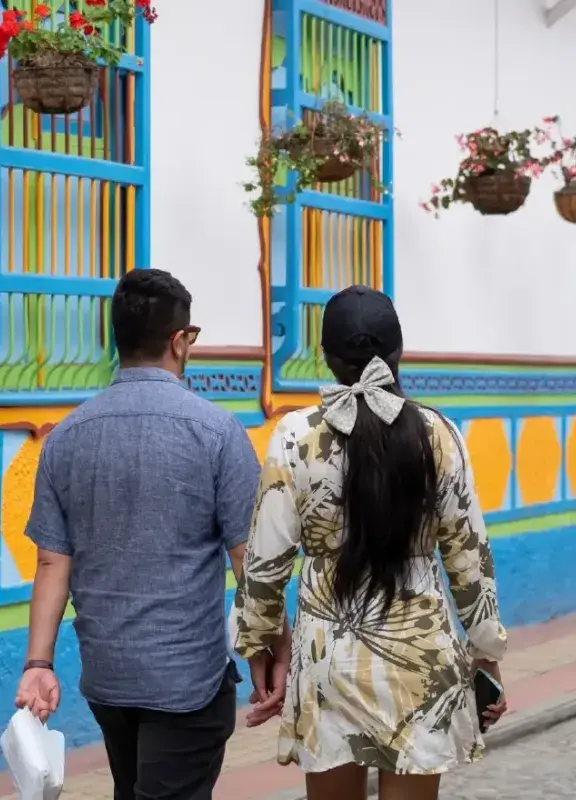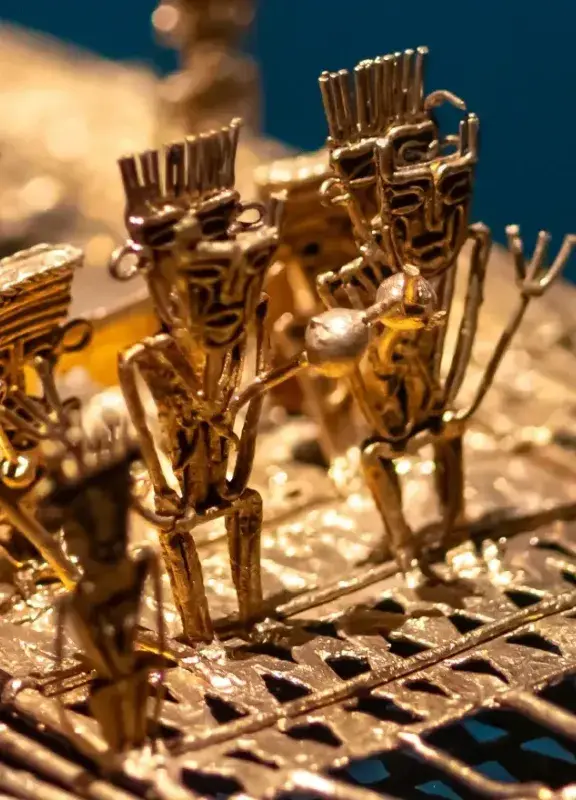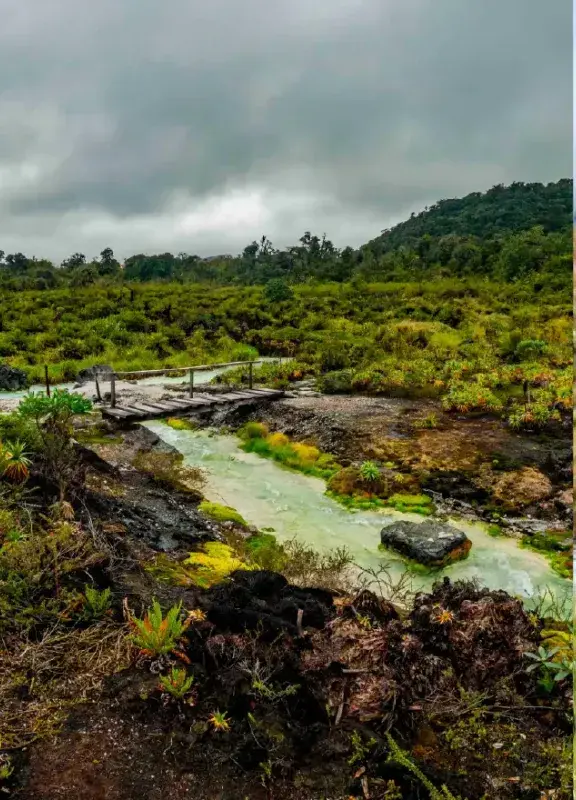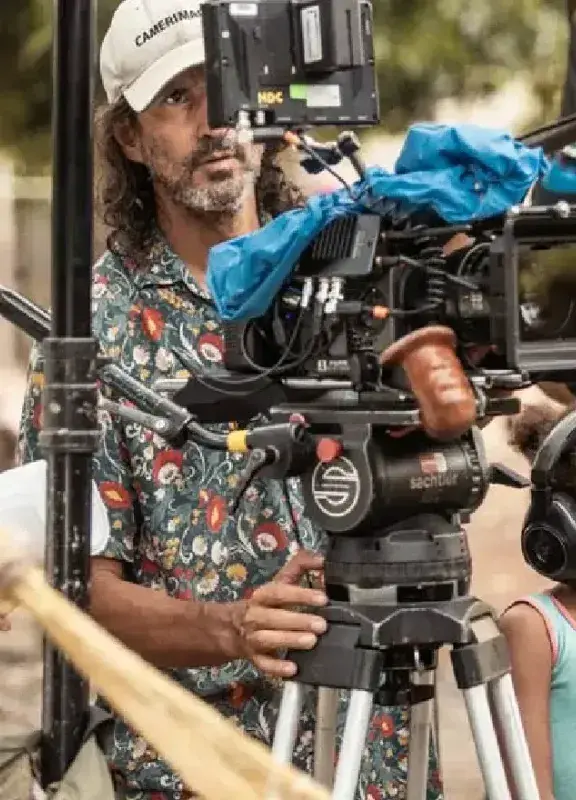Colombia’s myths and legends
Among the mountains, jungles and rivers of the country of beauty, Colombian myths and legends are woven and passed down from generation to generation. Enter a world of fantasy.
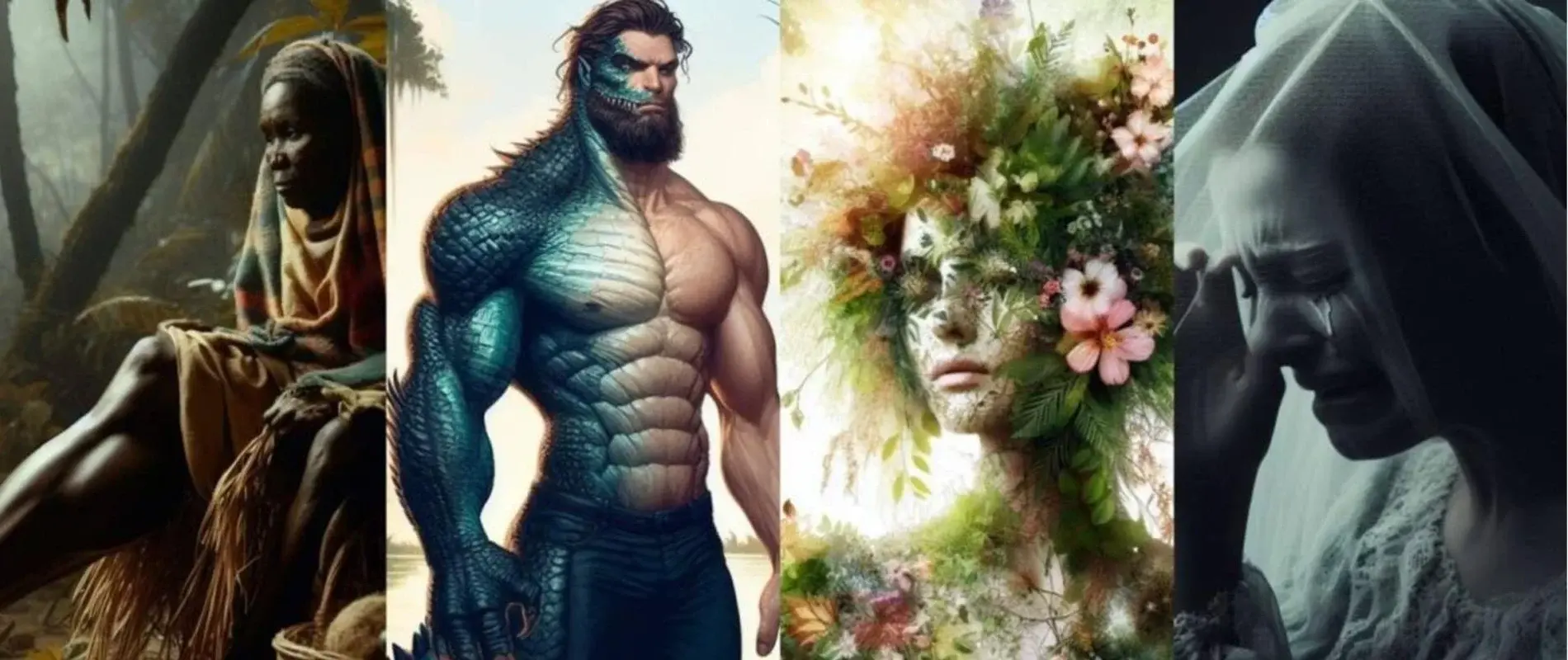
In every corner of Colombia lie stories full of magic and mysticism. These are tales passed down from generation to generation that reveal a world where reality and fantasy merge, bringing to life supernatural creatures, forgotten gods, and immortal heroes.
Below, we present five Colombian myths and legends that will immerse you in a world of nature, culture, and mystery.
1. La Madremonte: the guardian of the earth
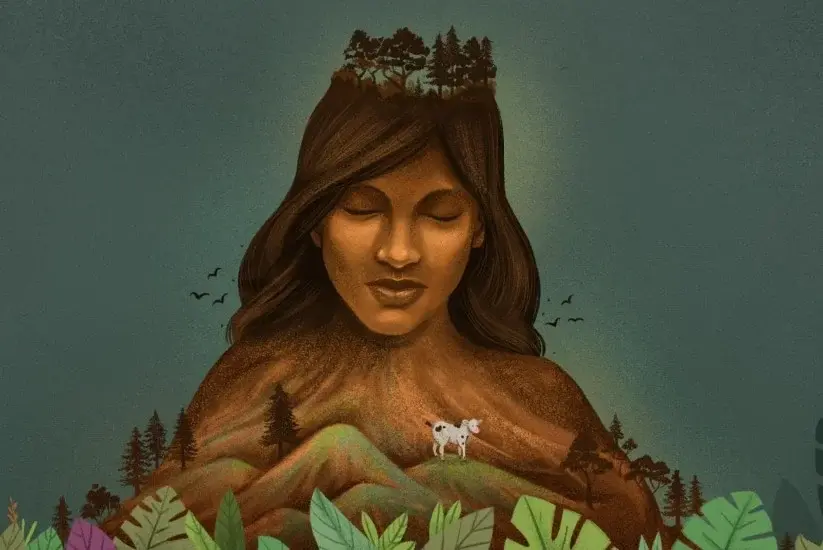
Deep in the heart of the land of beauty, specifically in the Amazon, appears La Madremonte: a supernatural figure who embodies the very essence of nature. Farmers and loggers who have seen her say she is a large and elegant woman, dressed in a cloak of fresh leaves and green moss, her face hidden under a hat adorned with green leaves and feathers. Some have not been able to define her physical form but claim to have felt her imposing presence. La Madremonte punishes those who invade her territory, instilling respect and fear in those who challenge her dominion over the land.
Those who have had the fortune (or misfortune) of encountering her tell intriguing stories of her presence. Some claim to hear her screams echoing through the forest on dark and stormy nights. It is said she lives in tangled places with leafy trees, far from the noise of civilization and in warm forests where she dwells with all kinds of animals. Farmers say that when La Madremonte bathes in the riverheads, the waters become muddy and overflow, causing strong floods.
2. El Hombre Caimán: the mystery of the Magdalena River
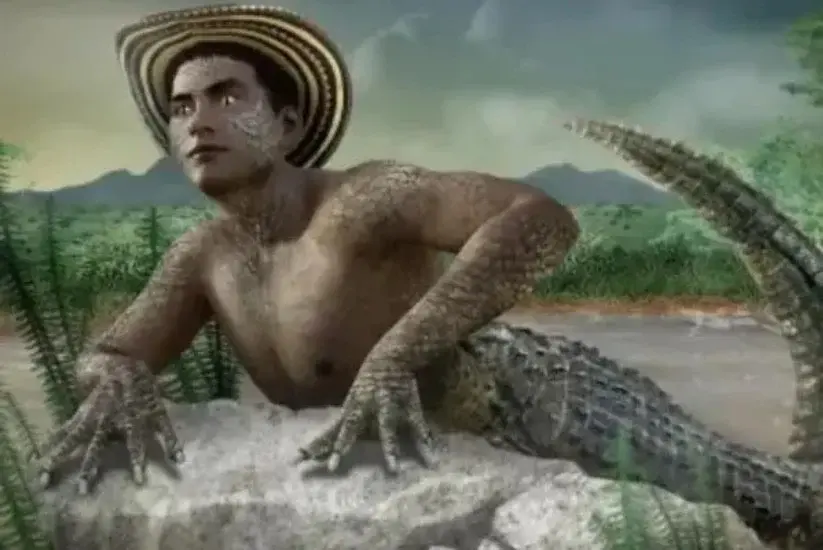
Along the Magdalena River, the story of Saúl, the Caiman Man, is whispered — a fisherman with a disturbing obsession for the women who bathed in its waters. Desperate to spy on them, Saúl sought the help of a sorcerer who gave him a potion to turn into a caiman and watch them unseen. However, when they tried to reverse the spell, something went wrong: only his head transformed, trapping him in a half-man, half-caiman form.
From that moment on, women, terrified by the appearance of this hybrid creature, stopped visiting the river. Saúl, turned into a nightmare figure, spent the rest of his days wandering in desolation to the river's mouth. The legend has left its mark in the region, with monuments and businesses in the municipality of Plato, Magdalena, honoring his legacy. El Hombre Caimán has been immortalized as one of the most iconic legends of riverside folklore, so much so that since 1972, the Festival del Hombre Caimán is held in Plato, celebrating the cultural identity of the river man.
3. El Mohán: the terror of darkness

In Puerto de la Caimanera, located in Espinal, Tolima, it is said that El Mohán sings and appears: a figure who protects the region's rivers and streams. With an imposing presence, his physical appearance is described in various ways: some see him as a burly man with long hair, a beard, and adorned garments. Others describe him as a strong, dark-skinned indigenous man with gold teeth. Regardless of his true appearance, he is always seen with a lit cigar in hand. Some refer to him as Poira, master of the waters, and many stories say this creature fell in love with women who washed clothes along the Magdalena River and lured them away with promises, only to lose them in the depths.
El Mohán is not only a feared being: he is a guardian of nature. His appearances are said to be warnings to those who do not respect the balance of aquatic ecosystems. He is believed to protect the Magdalena River and its surroundings, preventing destruction and maintaining natural balance. His fame and relevance in Tolima's culture reflect his role as a revered protector.
4. La Patasola: the mystery of Colombia’s forests
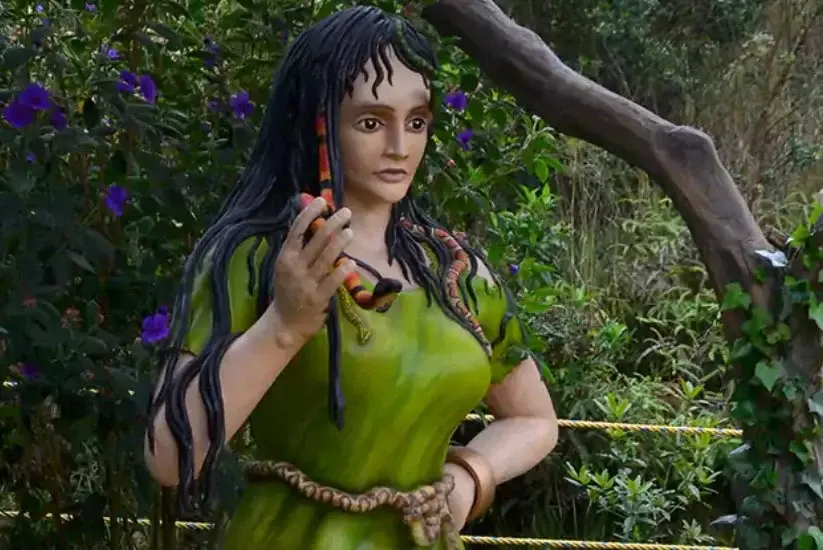
In the most secluded corners of Colombia's forests hides La Patasola, a legend that has endured over time and has similar versions in countries like Venezuela, where she is known as La Sayona. The story goes that La Patasola was born from betrayal and jealousy: an unfaithful woman who, after being discovered and killed by her husband, turned into a wandering spirit with a single hoofed leg that roams lonely farms and jungles. Her wailing, described as heartbreaking cries in the dark, is an endless echo of sorrow for her lost three children.
Some describe her as a beautiful woman who lures solitary men in the forest, only to transform into a terrifying figure when they get close. However, once under her spell, there’s little chance of escaping unharmed. La Patasola is a warning in Colombian folklore about the consequences of infidelity. The betrayal surrounding her and her presence remain a haunting part of the most popular Colombian myths and legends.
5. La Llorona: the wail of a lost soul

Of pre-Hispanic origins, La Llorona is a figure who roams the mountains and rivers of Colombia and Latin America as a ghost whose presence is synonymous with sorrow, being one of the best examples of the cultural diversity found in these stories. Some describe her with long hair where crickets, butterflies, and fireflies perch, a dirty dress hiding her body and barefoot feet, a disfigured face like a skull, and large hands holding her lifeless child — a symbol of her eternal suffering.
It is said that she was once a beautiful woman who, after abandoning her children, turned into a tormented soul still searching for them in regret. The cry of La Llorona is a heart-wrenching scream heard near rivers, lakes, and coffee plantations, a sound that reflects her deep sorrow and which, according to those who have heard it, says “¡Ay mis hijos!” The legend describes her as a grieving mother, burdened with guilt and pain, wandering in search of redemption.
Colombian legends and Colombian myths keep secrets fueled by the magic of their landscapes and the mystery of their traditions. These stories not only enrich the country’s folklore but also invite you to explore a world where the supernatural and magical exist in every shadow and whisper. Dive into these tales and let the country’s charm and mystery accompany you on an unforgettable journey.
 Welcome, you are in
Welcome, you are in 



